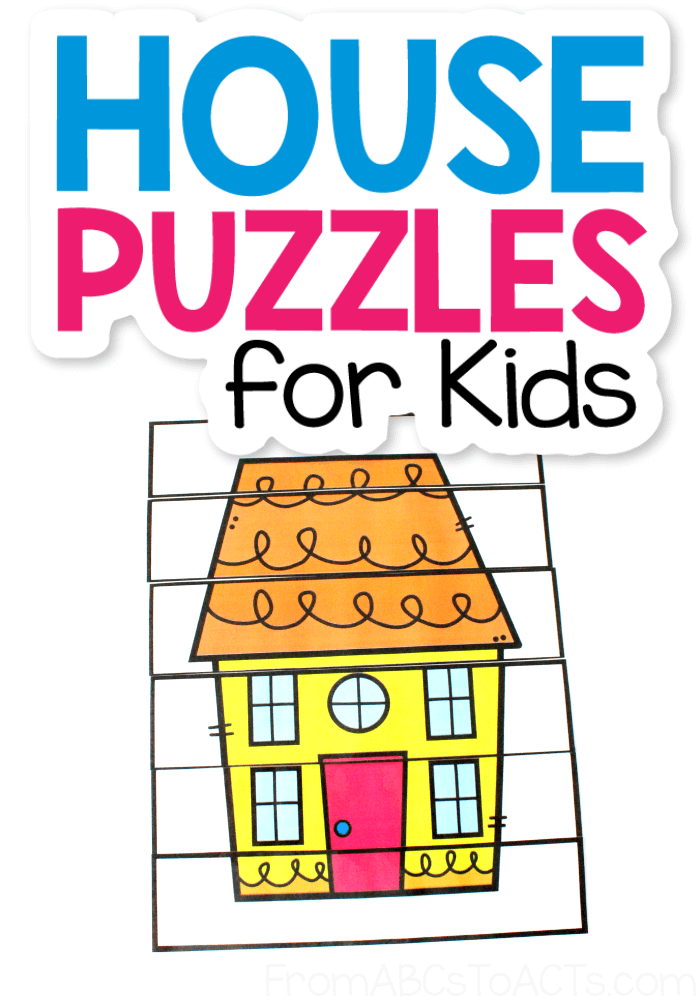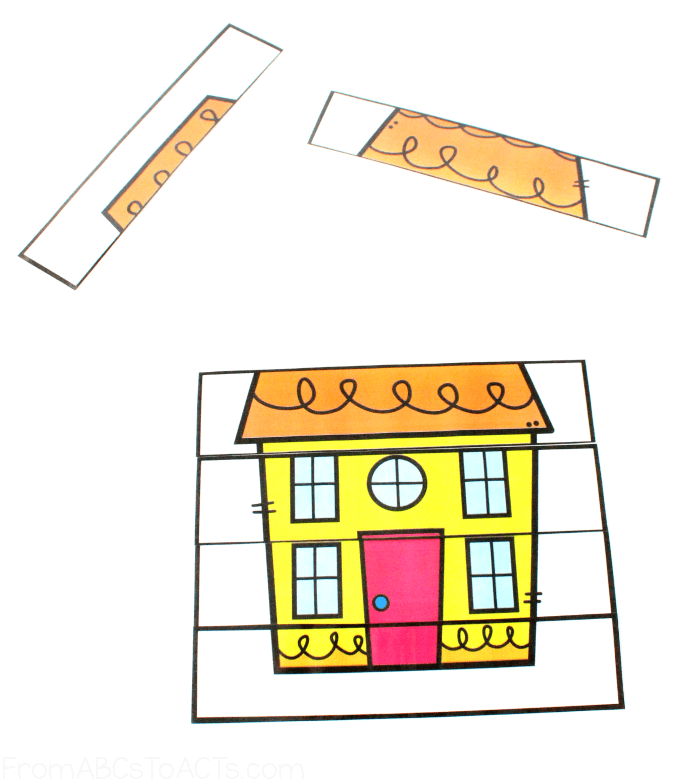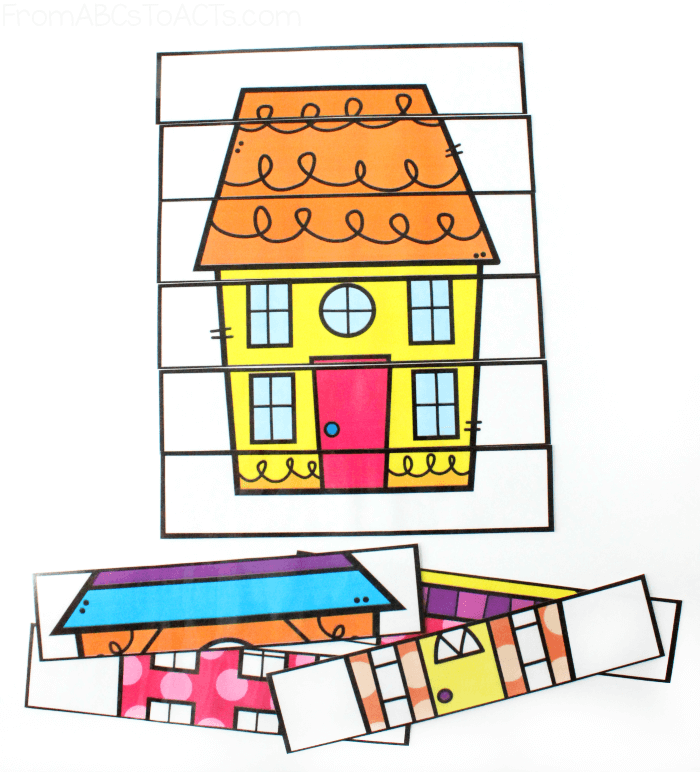This post may contain affiliate links. For more information, please see my full disclosure policy.
While the preschool days are filled with ABC’s and 123’s, it’s important to teach your little learners critical thinking skills as well. What better way to do that than with a few fun puzzles filled with silly looking houses!

How To Use
These Printable House Puzzles for Preschoolers are a perfect place to start! With 4 different house designs, these 6-piece puzzles make for a fun school “break” during your preschooler’s day of reading, writing, and counting.
Simply print out the puzzles, cut them into 6 pieces, and run them through the laminator to increase durability, and they are ready to use! Throw them in a Ziploc bag and take them on the go, or add them to a sensory bin with colorful rice and turn it into a fun sensory game!

Developing Critical Thinking Skills is Crucial to Development
Although we do not often think of critical thinking skills as a topic covered in preschool, it actually IS one of the most important skills that your preschooler can begin developing.
It allows your child to begin making decisions on their own, to solve problems between a friend or sibling, and it improves your learner’s ability to regulate and identify their emotions.
There are many ways to teach problem-solving skills; through matching, identifying objects based on characteristics, or even doing an obstacle course in the house!
One reason why these house puzzles are such a great tool for developing differentiation skills is not only because the colors are bright and inviting to your little learner, but they also utilize contrasting colors on the houses! Although this may not be something your little one will point out, it is something their brains will pick up on and use to differentiate between the house pieces!

Meeting Your Learners Needs
As always, these simple printable puzzles are not only easy to use, but there’s a variety of ways to accommodate the needs and strengths of each learner.
For your emerging learner:
Print doubles of each house. One copy should be cut and laminated, while the second copy can be laminated without any cutting. This will allow your emerging thinker to have a visual available of what the puzzle should look like once completed. Your preschooler may even want to use it as a mat to match up the pieces.
For your advanced learner:
If your little Sherlock Holmes seems to fly through the puzzles with no assistance, try mixing a few of the house puzzles together! See if they can start with 12 pieces from 2 separate houses, and add from there! Before you know it, they will be making all 4 puzzles at once!
